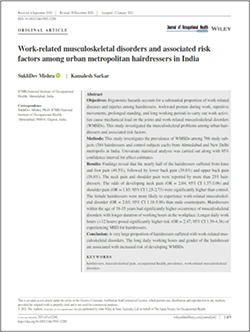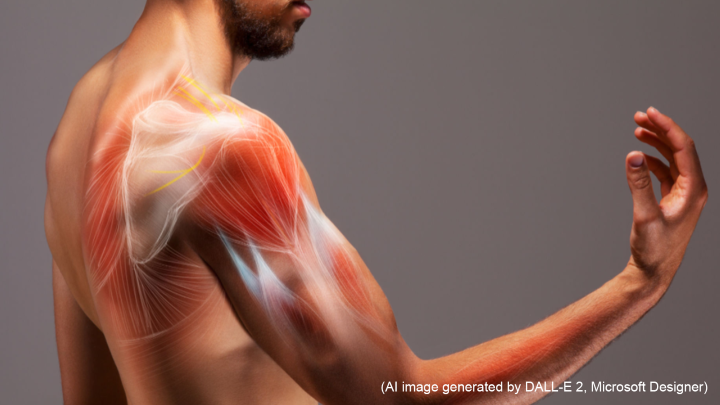#0120 Work-related musculoskeletal disorders and associated risk factors among urban metropolitan hairdressers in India

A Literal Pain in the Neck: Musculoskeletal Disorders Are Very Common Among Hairdressers in India
By now, it is no secret that certain professions are considerably more likely to cause work-related diseases and injuries. One notable example is hairdressing, which usually involves working long hours while standing up and performing repetitive movements in an awkward posture. Studies from various countries have shown hairdressers are at high risk of developing work-related musculoskeletal disorders (WMSDs), which cause recurrent pain in different parts of the body.
In India in particular, the poorly organized nature of hairdressing jobs further exacerbates this problem, resulting in a general neglect of occupational health matters among hairdressers. Even though the number of hairdressers in India is among the largest in the world, not much scientific research has focused on WMSDs and their associated risk factors among hairdressers.
To fill in this knowledge gap and get a better view on this problem, we conducted a study to investigate WMSDs among urban hairdressers in the Indian cities of Ahmedabad and New Delhi. We handed out questionnaires to 384 hairdressers and 384 salespeople from retail cellphone showrooms; the latter was used as a control group because most demographic variables (age, income, work hours, etc.) are similar between both jobs.
We found that almost half of the hairdressers suffered from knee and foot pain, about 40% suffered from lower or upper back pain, and over 25% suffered from neck and shoulder pain. Through statistical analyses, we found that the odds of developing neck pain and shoulder pain were considerably higher among hairdressers compared with the control group. Moreover, we clarified several factors that seem to be associated with the odds of developing WMSDs among hairdressers. For example, women hairdressers were much more likely to experience WMSDs than men, and long working hours posed significantly higher risks as well.
Overall, our findings emphasize the urgent need to raise awareness of the dangers of repetitive movements in awkward positions that are unfortunately common in certain professions. It is crucial that we promote occupational health education among hairdressers and their employers to prevent WMSDs as much as possible.

Link to the original journal article:
https://onlinelibrary.wiley.com/doi/full/10.1002/1348-9585.12200
Title of the paper:
Work-related musculoskeletal disorders and associated risk factors among urban metropolitan hairdressers in India
Authors:
SukhDev Mishra, Kamalesh Sarkar




